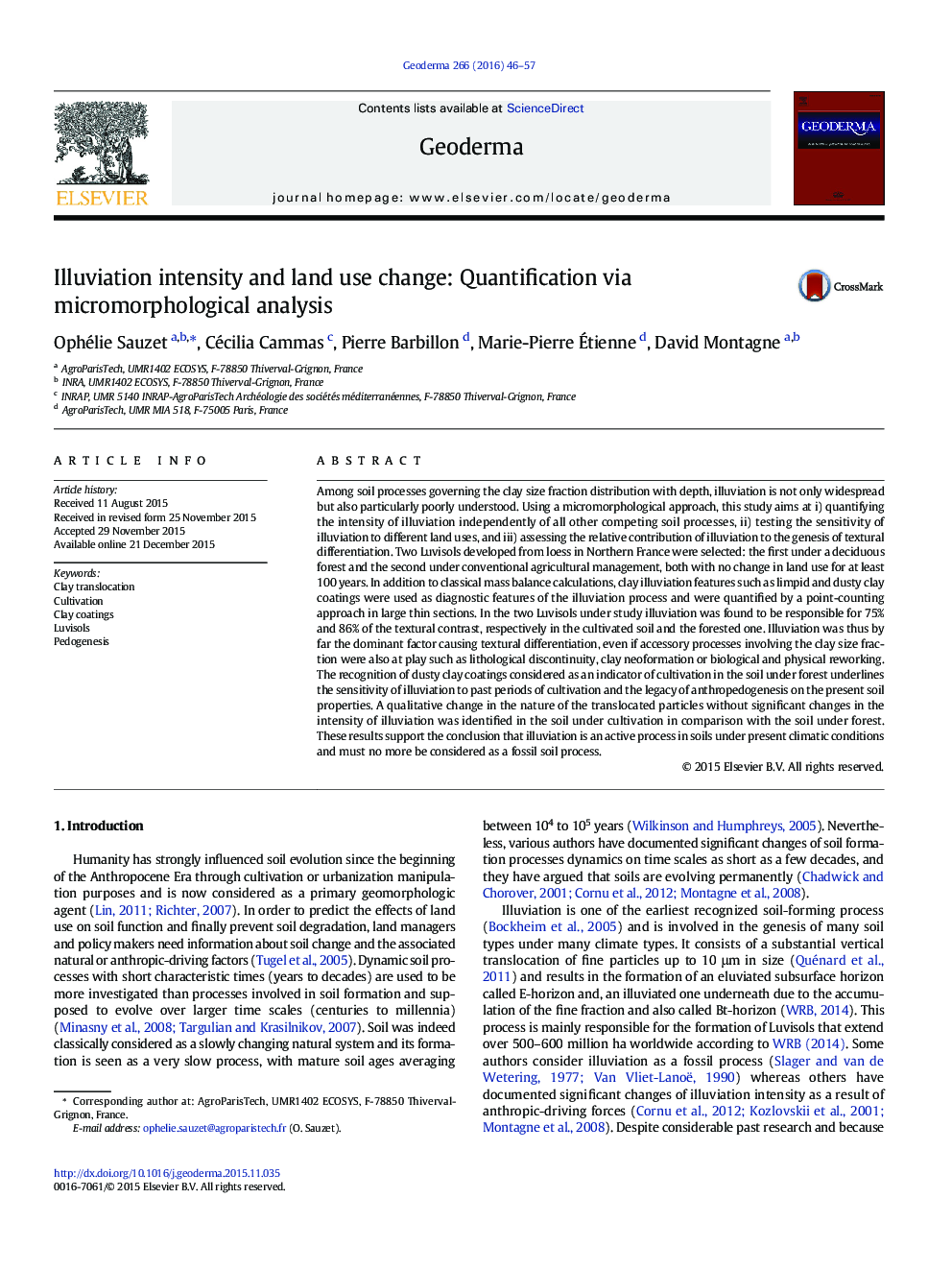| کد مقاله | کد نشریه | سال انتشار | مقاله انگلیسی | نسخه تمام متن |
|---|---|---|---|---|
| 6408354 | 1629451 | 2016 | 12 صفحه PDF | دانلود رایگان |
- Micromorphological approach: a powerful way to quantify illuviation in soils
- No quantitative but a qualitative change in illuviation after cultivation
- Illuviation appears to be still active in soils under present climatic conditions.
- Textural contrast mainly due to illuviation in Luvisols from the Paris Basin
Among soil processes governing the clay size fraction distribution with depth, illuviation is not only widespread but also particularly poorly understood. Using a micromorphological approach, this study aims at i) quantifying the intensity of illuviation independently of all other competing soil processes, ii) testing the sensitivity of illuviation to different land uses, and iii) assessing the relative contribution of illuviation to the genesis of textural differentiation. Two Luvisols developed from loess in Northern France were selected: the first under a deciduous forest and the second under conventional agricultural management, both with no change in land use for at least 100 years. In addition to classical mass balance calculations, clay illuviation features such as limpid and dusty clay coatings were used as diagnostic features of the illuviation process and were quantified by a point-counting approach in large thin sections. In the two Luvisols under study illuviation was found to be responsible for 75% and 86% of the textural contrast, respectively in the cultivated soil and the forested one. Illuviation was thus by far the dominant factor causing textural differentiation, even if accessory processes involving the clay size fraction were also at play such as lithological discontinuity, clay neoformation or biological and physical reworking. The recognition of dusty clay coatings considered as an indicator of cultivation in the soil under forest underlines the sensitivity of illuviation to past periods of cultivation and the legacy of anthropedogenesis on the present soil properties. A qualitative change in the nature of the translocated particles without significant changes in the intensity of illuviation was identified in the soil under cultivation in comparison with the soil under forest. These results support the conclusion that illuviation is an active process in soils under present climatic conditions and must no more be considered as a fossil soil process.
Journal: Geoderma - Volume 266, 15 March 2016, Pages 46-57
